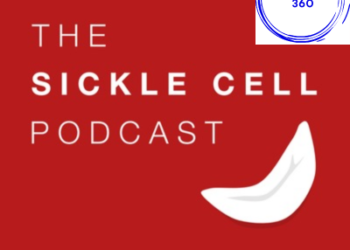Sickle Cell Disease Podcast: A Must-Listen Medical Podcast
Sickle cell anemia is when red blood cells (RBCs) don’t have their usual shape but are shaped like a crescent. These sickle cells easily stick together and clog up small blood vessels. When blood flow is restricted, it can cause severe pain and organ damage.
What are the signs of sickle cell disease?
People with sickle cell disease generally have mild to moderate anemia. They can experience extreme pain without any prior signs. This happens when sickle cells block the blood flow and reduce oxygen supply to the tissues. The pain can last for hours, days, and sometimes longer.
Sometimes the pain can be managed at home itself. If the pain gets unbearable, the person will need to be taken to the hospital.
Signs of anemia include :
- Pale skin, lips, or nails
- fatigue
- dizziness
- shortness of breath
- irritability
- trouble paying attention
- heart palpitations
What causes sickle cell disease?
Sickle cell disease is not contagious, so you cannot pass it on to others like a cold or an infection.
People with sickle cell disease develop it because they inherit two sickle cell genes, one from their father and mother. In some cases, people may inherit the sickle cell gene from one parent and the other gene for abnormal hemoglobin from the other parent.
A person who inherits the sickle cell gene from only one parent will not develop the disease but will have sickle cell trait genes for their children.
How is sickle cell anemia treated?
Stem cell transplant (also known as bone marrow transplant) is the only known cure for sickle cell disease. Transplantation is a complex and risky procedure and is currently only available to some patients.
Scientists are studying gene therapy as a treatment for sickle cell disease and hope that one day doctors can stop the disease by altering or replacing the abnormal gene that often causes it. But even without treatment, people suffering from sickle cell disease can lead normal lives if they follow their treatment properly.
Monika Asnani, on her Sickle Cell Disease Podcast, brings together evidence of ways to improve the knowledge of patients and their caregivers. She is one of the board members of the Caribbean Researchers in the Sickle Cell Disease & Thalassemia group. She describes her findings on the Sickle Cell Disease Podcast. You can listen to more about this on Cochrane Podcasts. The podcast is also available in various languages. To know more, visit https://gethealthy360.com/.








